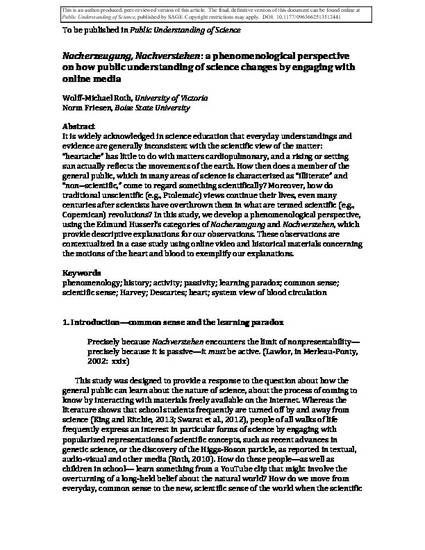
It is widely acknowledged in science education that everyday understandings and evidence are generally inconsistent with the scientific view of the matter: “heartache” has little to do with matters cardiopulmonary, and a rising or setting sun actually reflects the movements of the earth. How then does a member of the general public, which in many areas of science is characterized as “illiterate” and “non-scientific,” come to regard something scientifically? Moreover, how do traditional unscientific (e.g., Ptolemaic) views continue their lives, even many centuries after scientists have overthrown them in what are termed scientific (e.g., Copernican) revolutions? In this study, we develop a phenomenological perspective, using Edmund Husserl’s categories of Nacherzeugung and Nachverstehen, which provide descriptive explanations for our observations. These observations are contextualized in a case study using online video and historical materials concerning the motions of the heart and blood to exemplify our explanations.
This document was originally published by SAGE in Public Understanding of Science. Copyright restrictions may apply. doi: 10.1177/0963662513512441
Available at: http://works.bepress.com/norman_friesen/22/
